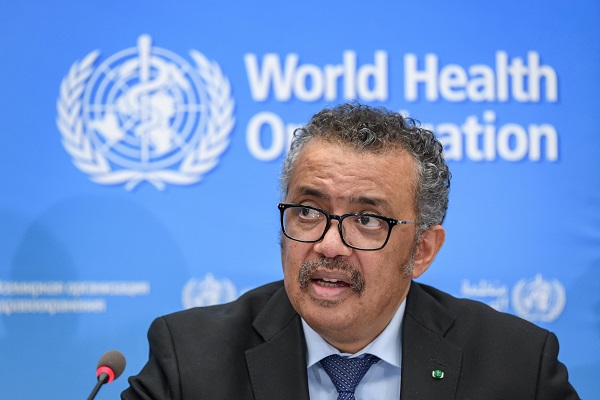…Says it is a milestone achievement

The World Health Organization (WHO) has lauded the new political declaration to be adopted by its member states during the high-level meeting of the UN General Assembly on Global Road Safety. It commits to reduce road traffic deaths and injuries by 50 per cent by 2030, a milestone for road safety and sustainable mobility.
The meeting began today, June 30, 2022, and will end on July 1, 2022, under the theme “The 2030 horizon for road safety: securing a decade of action and delivery”.
In his opening remarks, the director-general of WHO, Dr. Tedros Ghebreyesus, said road safety affects everyone.
“We step from our homes every day onto roads that take us to our jobs, schools and to meet our vital daily needs. Yet our transport systems remain far too dangerous. No death should be acceptable on our roads. The future of mobility should promote health and well-being, protect the environment and benefit all.
“It will require transformative leadership from the highest levels of government to act on the Political Declaration to make that vision a reality.”
Statistics show that worldwide, road crashes currently kill around 1.3 million people each year – more than 2 every minute and more than 90 per cent occur in low- and middle-income countries. Crashes are the biggest killer of children and young people globally. More than 50 million people have died on the world’s roads since the invention of the automobile, more than the number of deaths in the First World War or some of the worst global epidemics.
WHO is the lead agency for road safety in the United Nations and supported the President of the UN General Assembly in preparing this High-Level Meeting in collaboration with other UN agencies.
Through the declaration governments from around the world commit to providing leadership and coordination at the highest level of government to ensure all parts of the society are included to act on road safety and commit to boosting policies and actions to reduce deaths and injuries. The declaration calls for the development and funding of national and local plans with clear targets and funding.
“Road traffic deaths upend countless lives and cost countries around 3% of GDP each year,” noted Dr Etienne Krug, director of the department for social determinants of health, WHO. “This is an unacceptable price to pay for mobility. Putting safety at the heart of our mobility systems is an urgent health, economic and moral imperative. Let’s work together to scale up what works, save lives and build streets for life.”
In September 2020, the UN General Assembly adopted a resolution to proclaim the Decade of Action for Road Safety 2021–2030. WHO and the UN regional commissions, in cooperation with other partners in the UN Road Safety Collaboration, have developed a Global Plan for the Decade of Action, which was released in October 2021.
A statement released by the global health body said the plan calls for continued improvements in the design of roads and vehicles, enhancement of laws and law enforcement, and provision of timely, life-saving emergency care for the injured. In addition, it promotes healthy and environmentally sound modes of transport.
“It also highlights that responsibility for road safety stretches far beyond health and transport. Urban planners and engineers must prioritise safety as a core value in all transport infrastructure while businesses can influence and contribute to strengthening road safety by applying safety-first principles to their entire value chains.
“Countries and cities guided by the plan are seeing dramatic reductions in deaths. For example, the Colombian capital of Bogota halved deaths over 10 years through a set of integrated actions, including wide-ranging technical improvements and regulatory reforms that were driven by strong leadership,” it added.


